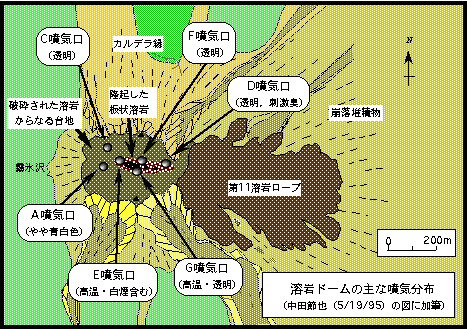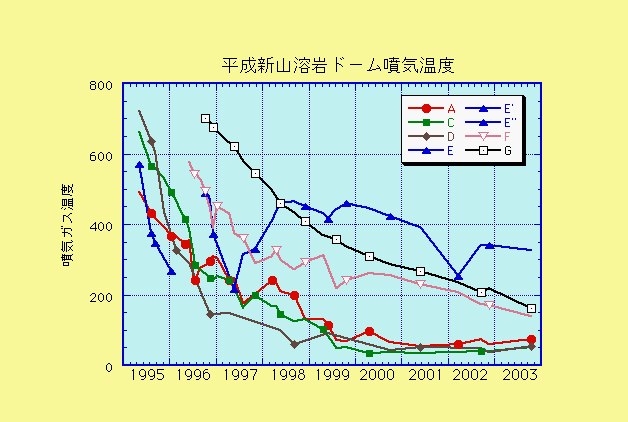The distribution of the main fumarolic gas of
the Heisei Shinzan (lava dome), and the change of the temperature
Newest data <Oct 17,2003>
 On the
Heisei Shinzan (lava dome), observations of fumarolic gases and
its temperature measurement are carried out from May,1995.
On the
Heisei Shinzan (lava dome), observations of fumarolic gases and
its temperature measurement are carried out from May,1995.
Although it is the fumarolic gas zone, which had several 100 degrees at the beginning in 1995, temperature falls gradually, it falls to about 2-300 degrees, or there is also the zone that the fumarolic gas itself has stopped. The surface of dome other than the fumarolic gas zone is cooled completely, and icing of snowfall or rime is also seen in winter.
However, near the root of the upheaval rock mass of the central part, fumarole of 200 degrees or more is still seen, and it is thought that the high-temperature state inside the dome still continues. The highest temperature in the measurement on October 17, 2003 was the 326 ℃ of fumarole (E).
Around fumarole (E), the adhesion of the mineral called molybdenum blue that is the oxide of molybdenum is seen. Inside fumarole, although beautiful dark blue is made, in air, it will oxidize white gradually. Since molybdenum blue crystallizes, it can be shown that the inside of the volcano where fumarolic gas is generated is still considerable high temperature. In Japan, molybdenum blue is verified also in the Satsuma-Iojima volcano of the Kagoshima prefecture.

Since the temperature of fumarolic gas changes with outer temperature and the wind direction, or wind velocity, the error of several 10 degrees may come out of it.